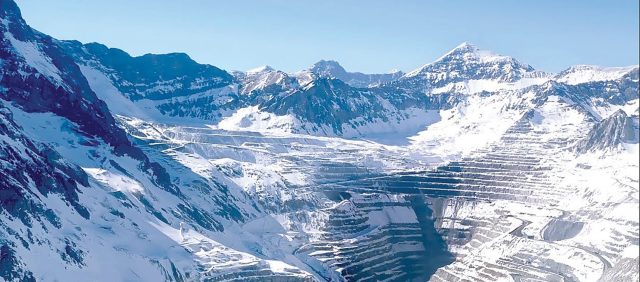The Cordillera of Dreams: Nostalgia for the Rocks, by David Bax

If every documentary is now going to start (and be replete) with drone footage, at least we’ve got filmmakers with as striking an eye for natural beauty as Patricio Guzmán to execute these shots. As his camera soars over and through the Andes or looks down into the heart of Santiago at the beginning of The Cordillera of Dreams, it is often accompanied by plaintive strings or by the rumbling of a volcano. But it’s also paired with Guzmán’s own voice, reminding us that everything we see below, whether made by man or by God, is Chile. And, as beautiful as it all looks from way up here in the clouds, it contains a traumatic past and present with which it continues to struggle each day.
Cordillera is a term meaning mountain range. In The Cordillera of Dreams, it refers specifically to the Andes mountain range that runs along the inner edge of Chile, the “sea,” as one interviewee calls it, that makes Chile an island. The man who says that is an artist–a sculptor–but Guzmán interviews as many of those as he does scientists in his exploration of the Cordillera as a part of every Chilean’s soul and as one of the few things about the country that has stayed the same since before Guzmán fled the Pinochet regime for Europe.
Guzmán once again employs his own hypnotic narration, slow and heavy like he’s trying to teach you Spanish. He’s speaking over images that are often beautiful and occasionally stomach churning; there’s a lot of footage of anti-Pinochet protesters being beaten and firehosed in the movie’s second half. It’s not contrast he’s aiming for here but rather a holistic understanding of the body politic and the physical world they inhabit. He enforces this oneness by, for instance, showing us a man painting the Cordillera and then a real shot of the mountains in which the clouds resemble nothing so much as brushstrokes.
In an earlier example, Guzmán uses another drone shot to show us the rough, sometimes dilapidated grid of Santiago’s streets and then the patterns of cracks and crevices in the mountainside. Society is nature. Seen from a distance, we cascade down escalators into the subway the same way a river cuts a path between the peaks.
Of course, things change much slower in nature than in society; one interviewee compares the Cordillera to the sturdy back of the chair on which Chile sits. That’s why Guzmán feels that Chile’s memories–its truth–reside there still, no matter how often modern forces attempt to ignore or distort the facts of the past.
The Cordillera of Dreams represents the third in a trilogy of these explorations. 2010’s Nostalgia for the Light looked at the desert; 2015’s The Pearl Button explored the ocean. Now we come to the mountain. Wherever Guzmán’s blend of Varda-esque autobiography and Costa-Gavras-style political outrage takes him next, we will be all the better for his prolonged pursuit of harmony in a destructively dissonant world.

























